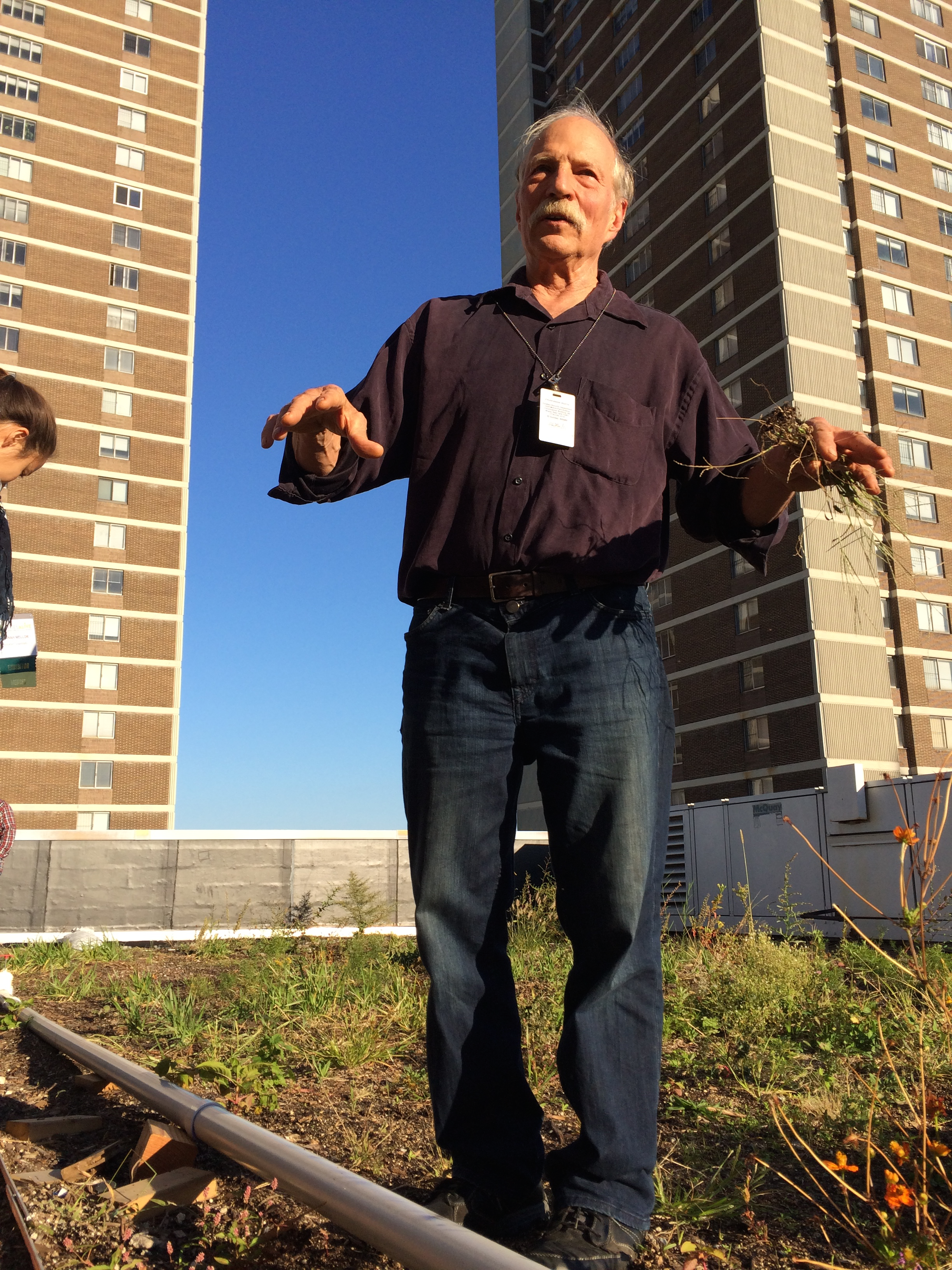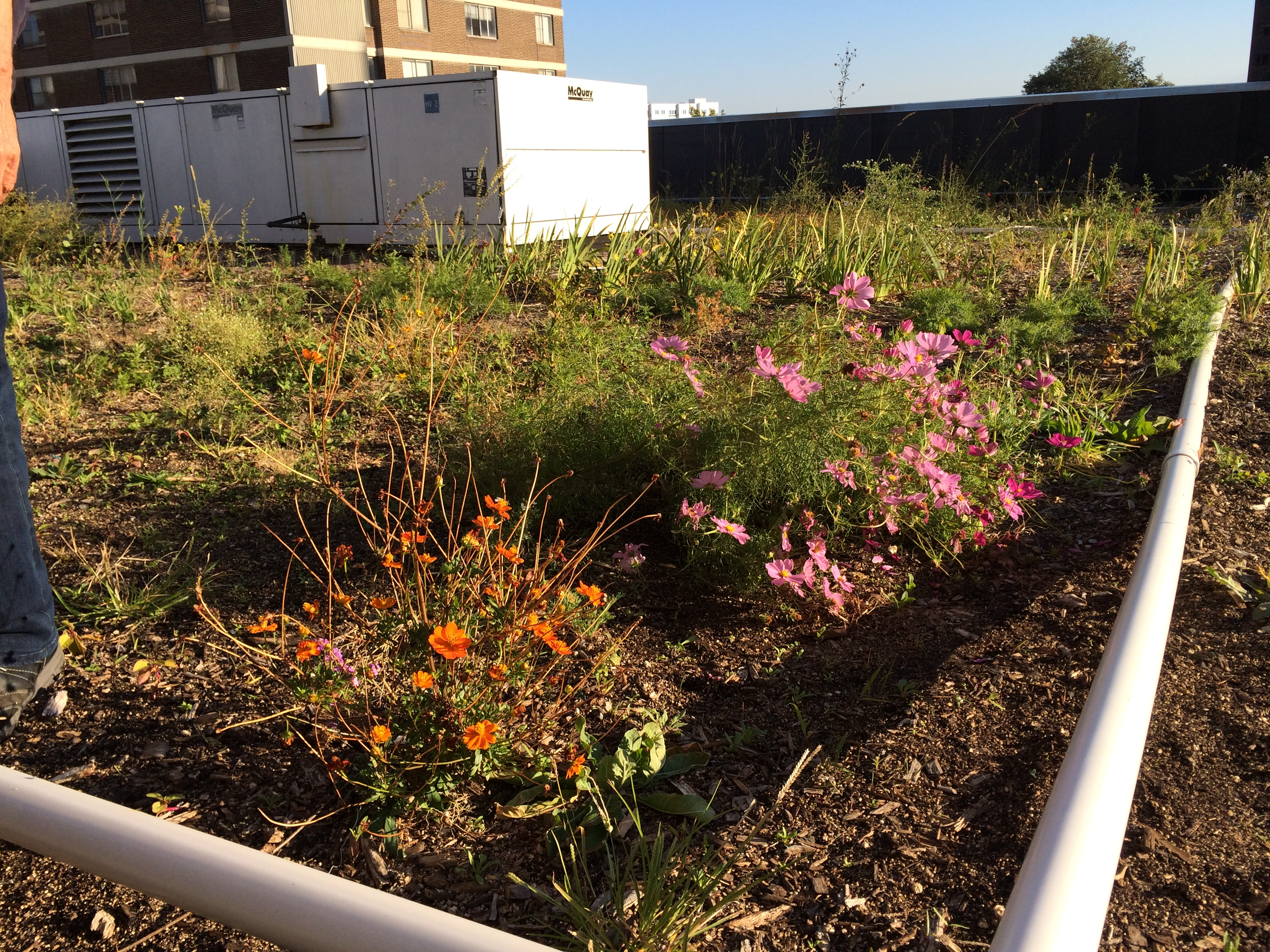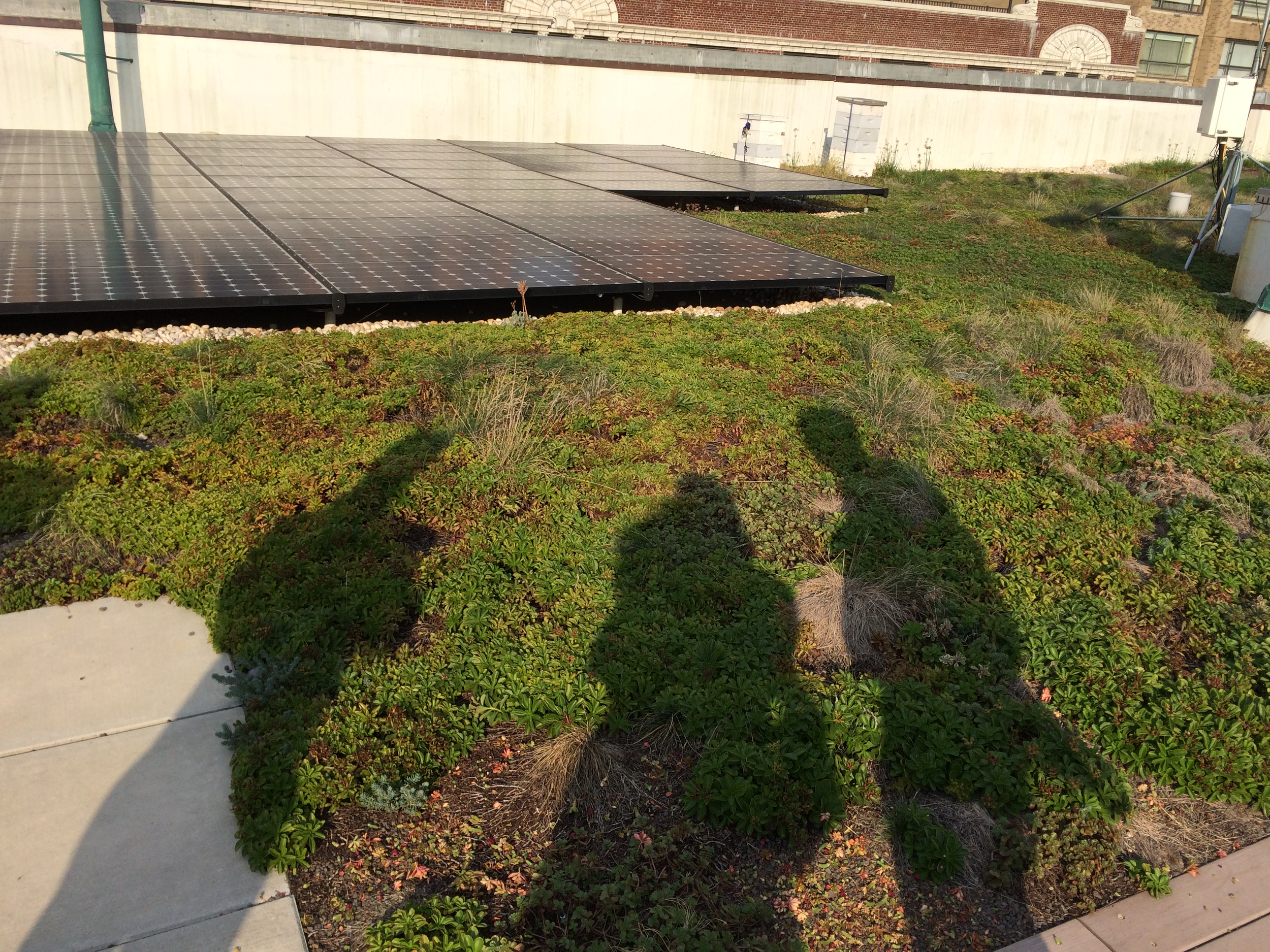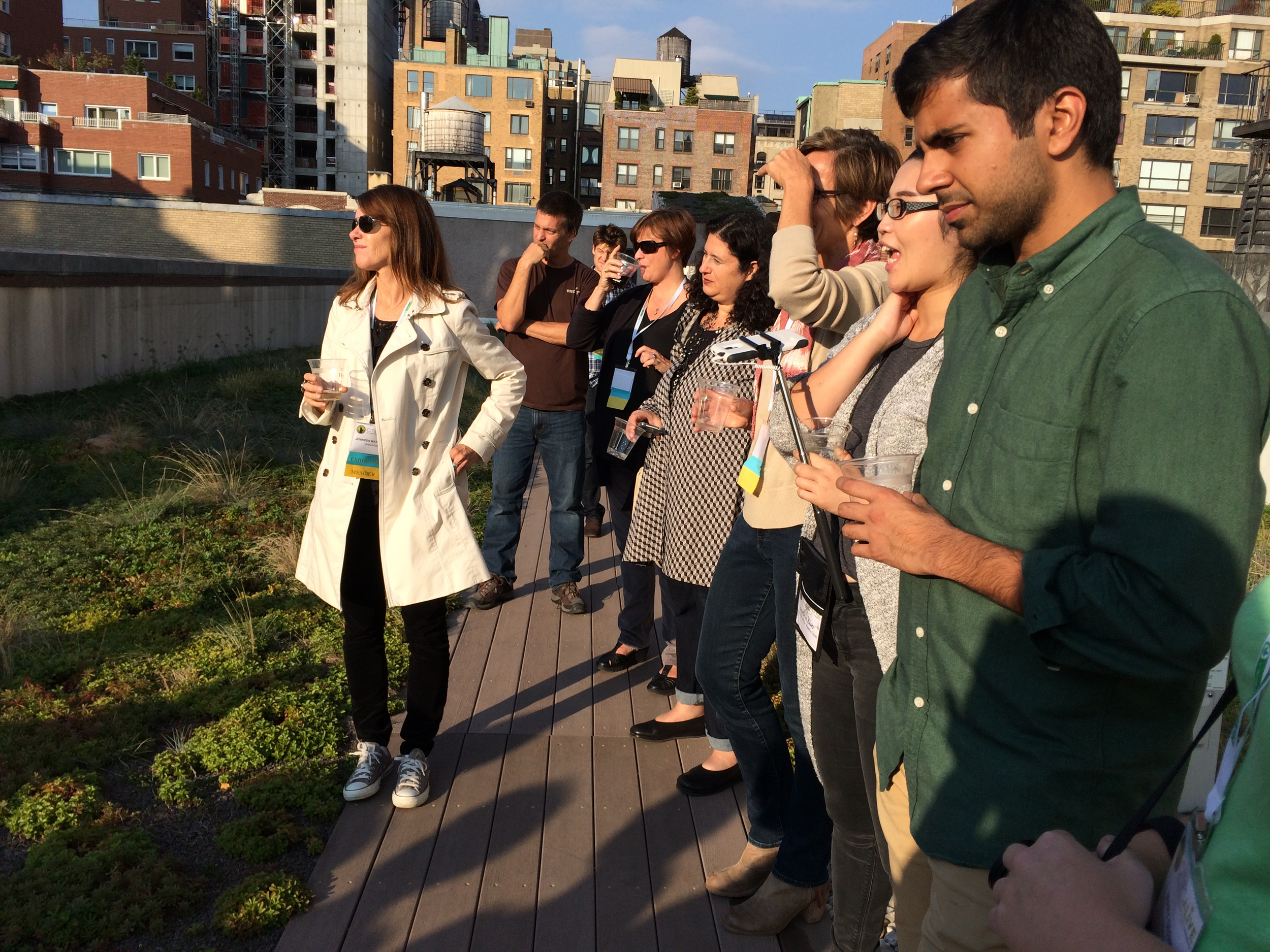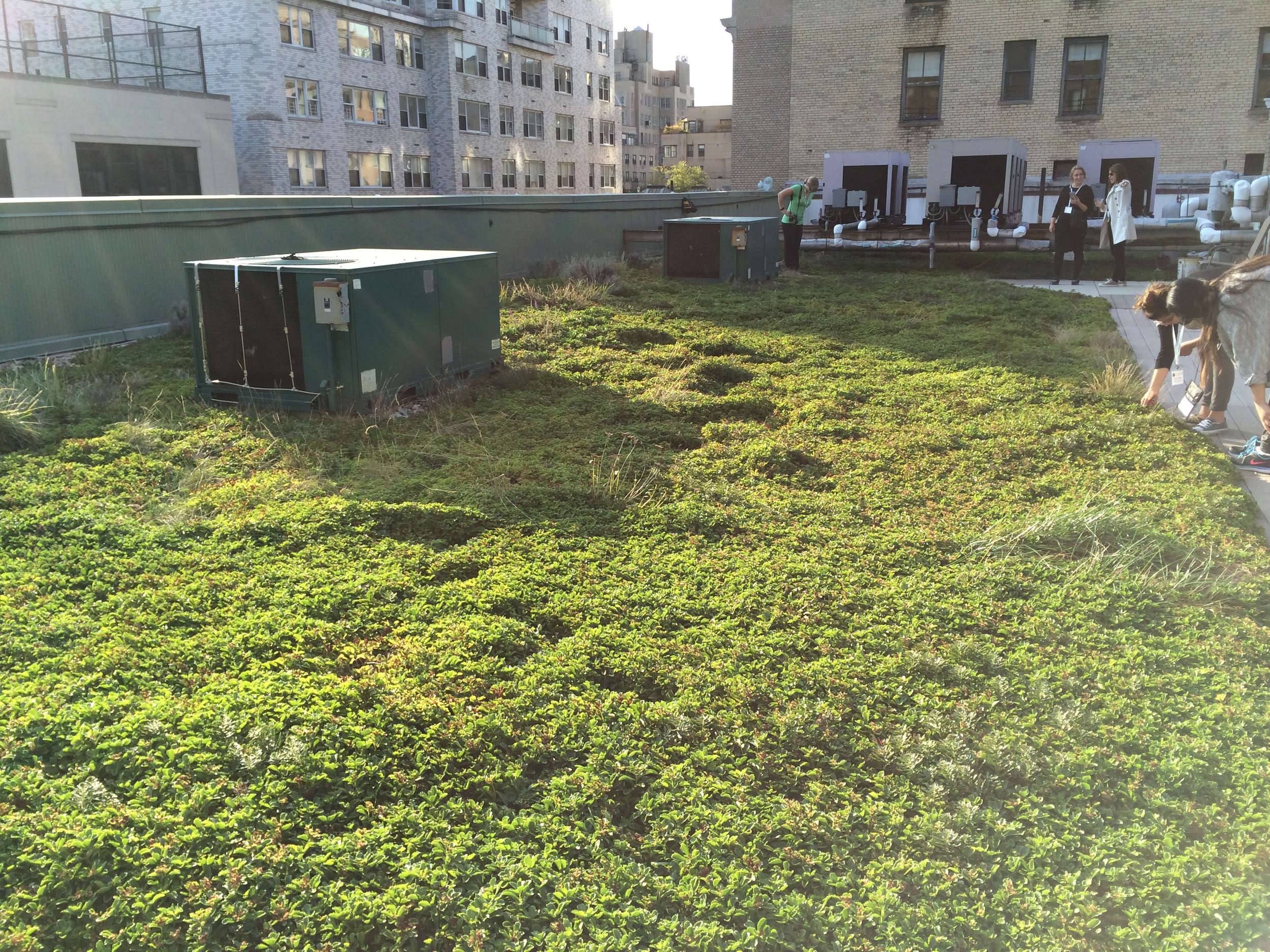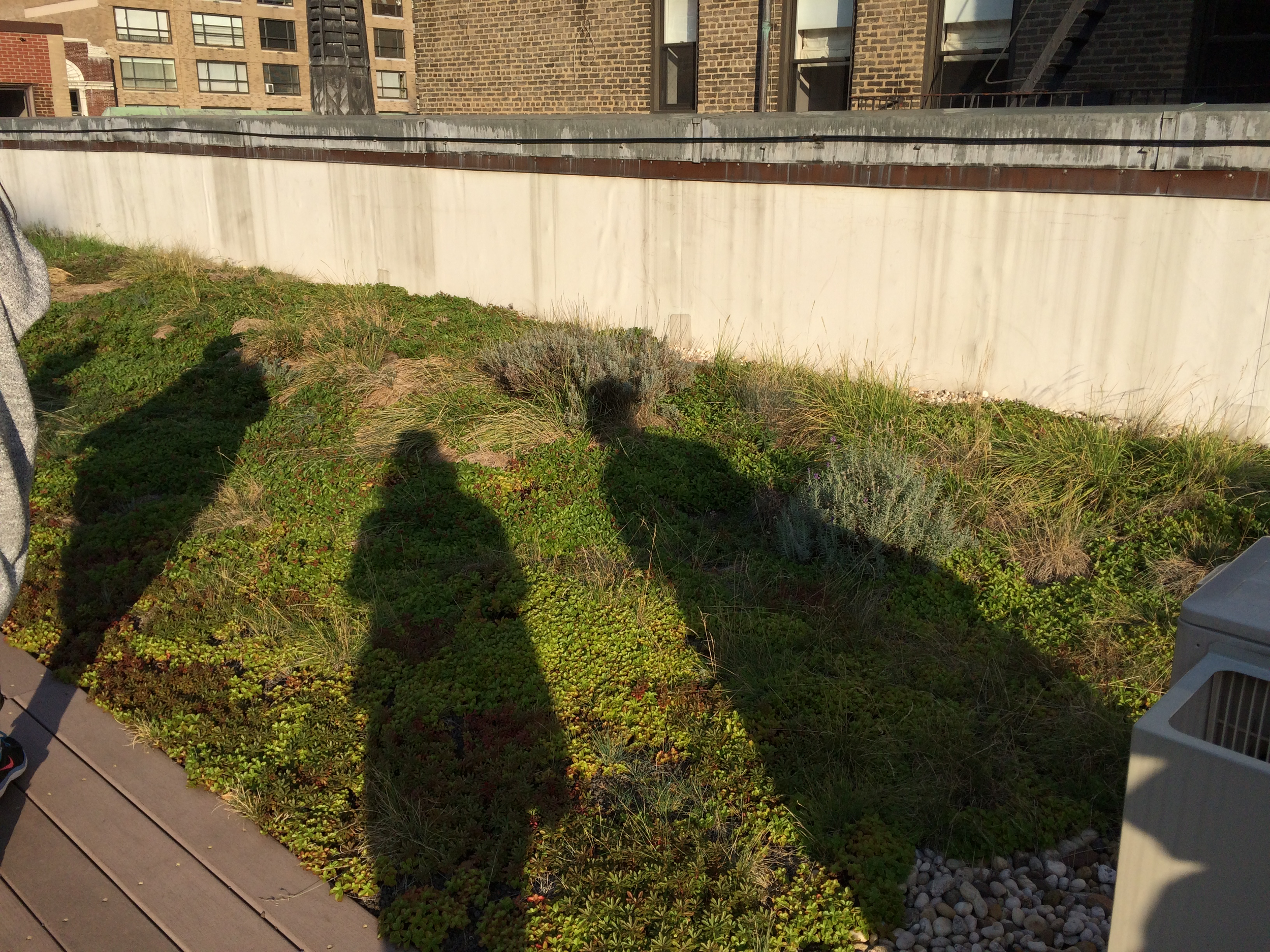Below is the Falk Recreation Center at Einstein Medical College in the Bronx. This building's green roof was financed by the NYC Department of Environmental Protection's Green Infrastructure Grant Program.
The tour given by Paul Mankiewicz, who designed this green roof explained that it sits above a swimming pool, so he wanted to pump its "back-flow" water up onto the roof for irrigation, rather than waste it down the drain. Won't the chlorine kill the plants? No, because Paul designed a system where the pool water is sprayed out over the plants to allow the chlorine to off-gas quickly. (Chlorine evaporates from tap water as a gas.) Further treatment of the water can be accomplished easily by applying wood ash to the soil where the water is delivered, he explained.
The plants are thriving quite nicely, in a very lightweight soil that Paul invented, called "Gaia Soil," which incorporates up-cycled polystyrene into its mixture. Like most of his green roof designs, this one contains only local, native perennials so that the earth displaced by the building below can still provide habitat for the many birds and butterflies which depend on these plants for their survival. These plants also do an excellent job of cleaning the air, cooling the building below, and providing a beautiful, brightly colored natural view from the many surrounding buildings. We loved it too!
The tour of Regis High School's green roof in Manhattan was given by Amy Norquist, the founder of Greensulate. This is one of their first green roof installations in the city, from back in 2009. The school's Father Philip Judge was so forward thinking that the roof already had a functional solar panel array when Amy was invited to design the green roof. The plants on this roof are all different varieties of sedum, the tiny-leafed flowering succulent that is the workhorse of most green roof installations. Sedum is used because it is extremely drought tolerant and very low maintenance, which suites it perfectly for the harsh environment found on top of a roof. The plants keep the solar panels much cooler than they were before, which has increased their efficiency markedly. The building below is also much cooler now in summer and warmer in winter, as well as being a quieter place below because of the plants. That is usually a good thing, but it's especially important for a place of learning and contemplation.
